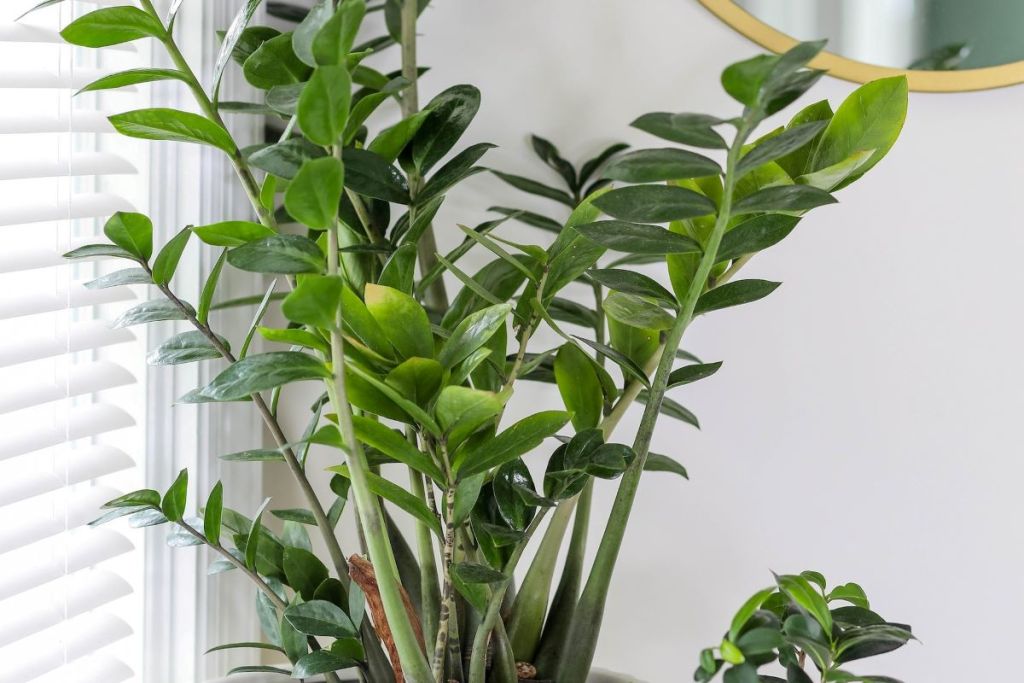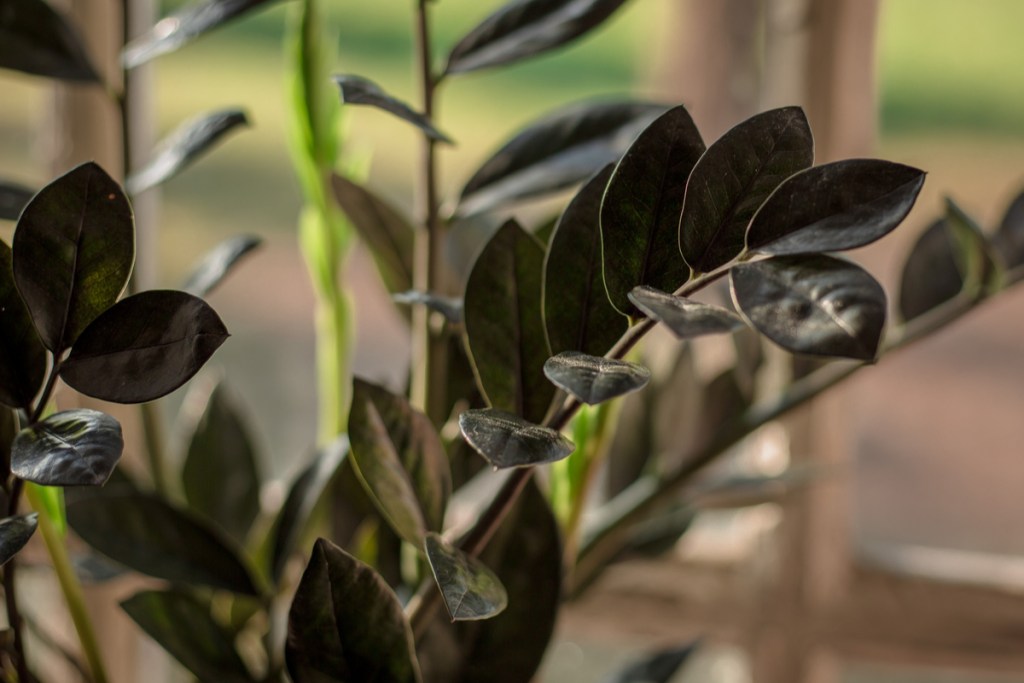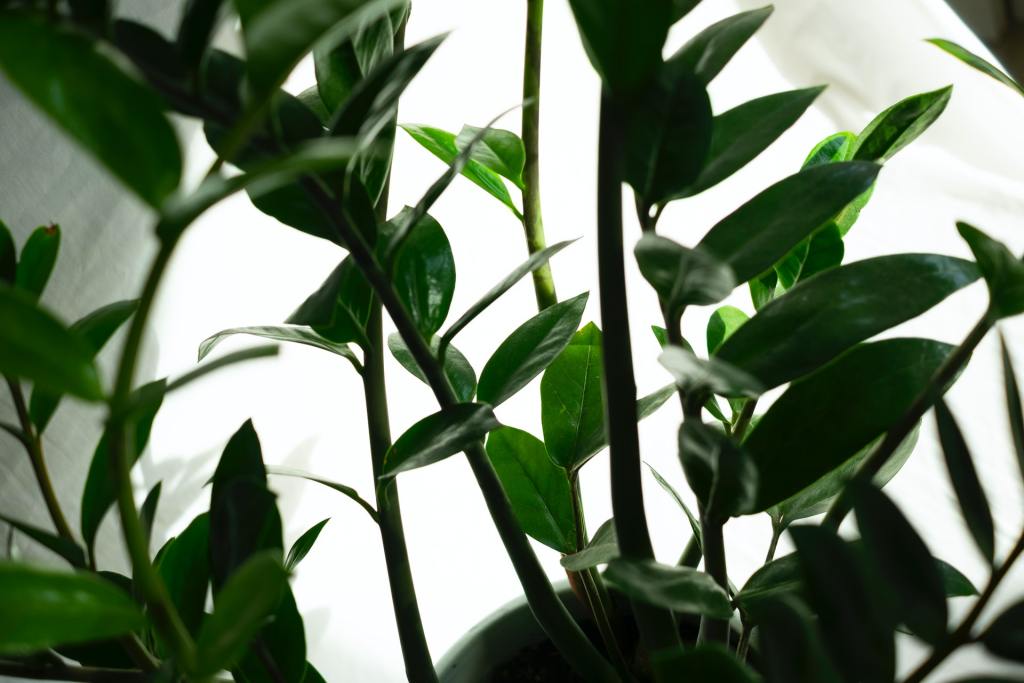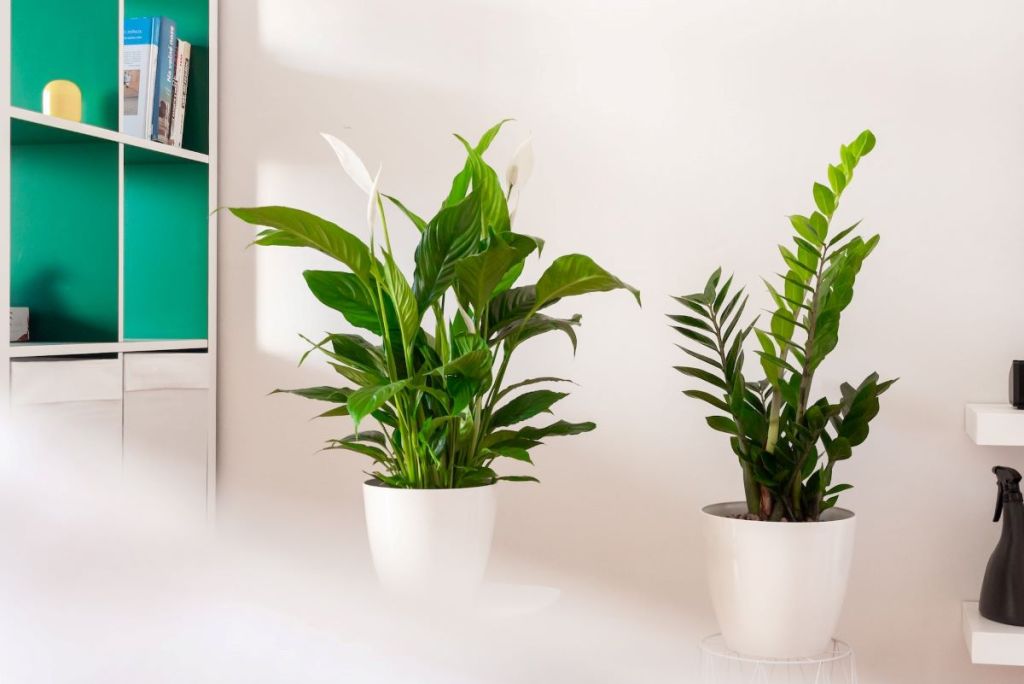Do you want to add a little greenery to your home, but simply don’t have enough light to keep most plants alive? While shady rooms may spell doom for many plants, there are a few options you can choose from for shade-loving houseplants. One you may not be familiar with is the ZZ plant. Curious about this interesting and exotic plant? Here’s what you need to know about caring for it!
Contents
- What is a ZZ plant?
- ZZ plant care
- Common ZZ plant problems
- Companion plants for your ZZ plant
Recommended Videos
Difficulty
Easy
What You Need
Gloves
Neem oil
Well-draining soil

What is a ZZ plant?
The first question on many peoples’ minds when first hearing about the ZZ plant is "what do the z's stand for?" The answer: Zamioculcas zamiifolia, the plant’s scientific name. It’s no wonder people have shortened it to ZZ plant. This tropical perennial is currently the only plant in the Zamioculcas genus, making it pretty unique. It grows primarily for its glossy leaves, although it can produce flowers under the right conditions.
The ZZ plant is native to eastern Africa, which might lead you to believe it's difficult to care for if you live in a radically different climate. However, while the ZZ plant may not be a good fit for every outdoor garden, it's surprisingly easy to care for as a houseplant.
One thing you should be aware of before bringing this plant into your home, though, is that it is poisonous. Keep it away from pets and children. It can also irritate your skin, particularly if you have a preexisting skin condition or sensitivities. We recommend wearing gloves when handling it!

ZZ plant care
Here's how to keep your ZZ plant healthy.
Step 1: Plant your ZZ plant in well-draining soil.
ZZ plants are incredibly drought resistant, thanks largely to their roots, which are thick rhizomes that store water. However, this means they are easy to overwater.
Step 2: Only water your ZZ plant when the soil is dry.
Typically this will be every few weeks, but it can vary depending on how much light your plant is getting.
Related
- Elephant ear plant care guide: What you need to know
- Now that it’s more common, here’s how to care for your sought-after Thai Constellation Monstera
- Can you grow plants in water beads? Here’s what you need to know
Step 3: Avoid placing your ZZ plant in direct sunlight, as its leaves can burn.
ZZ plants are tolerant of most lighting conditions. They thrive in medium to bright indirect light, but will grow even in low light. An interesting feature of these plants is that they grow particularly well under fluorescent lights, making them excellent office plants.
Step 4: Keep the temperature above 60 degrees Fahrenheit and avoid placing your ZZ plant near drafts.
Step 5: Avoid placing your plants in bathrooms and under air vents, as these both significantly change the humidity in the air.
ZZ plants are not picky about humidity, but they prefer a nice midrange.

Common ZZ plant problems
Overwatering and pests are the two most common issues with ZZ plants. Here's how to avoid them:
Step 1: Watch for yellow, droopy leaves (a sign of overwatering) and discolored patches on the leaves and stems (a sign of pest damage).
Step 2: Err on the side of caution when watering.
If you’re on the fence about whether your ZZ plant is ready for a watering, wait just a bit longer. ZZ plants are drought hardy and will recover much more easily from underwatering than overwatering.
Step 3: Check your ZZ plant regularly for pests.
ZZ plants can become targets for small insects, especially aphids, mites, whiteflies, and scale. You may notice the bugs on the plant, especially on the undersides of the leaves.
Step 4: Apply neem oil or another pet repellent to the leaves.
Step 5: Keep your ZZ plant in a place with good air circulation and dust them semi-regularly.

Companion plants for your ZZ plant
There are several great companion plants that will grow nicely next to your ZZ plant, but by far the best companion plant is the snake plant. Snake plants have the same care needs as ZZ plants and are incredibly easy to grow. If you’re a beginner and are looking for an impressive-looking but low-maintenance duo, then ZZ plants and snake plants are ideal.
A few other good options are:
- Philodendron
- Dracaena
- Ferns
- Prayer plants
- Ivy
Whether you grow it on its own or with a few companions, ZZ plants are an excellent way to bring a bit of the outdoors in. They’re especially well suited to office spaces, just make sure to warn your coworkers not to touch its leaves! Pay attention to how much water you give it and your ZZ plant should thrive in your home.
Editors' Recommendations
- How long does it take for a cactus to grow? Here’s what we know
- How to propagate your own stunning rubber tree plant from a cutting
- How are Italian parsley and curly parsley different? Here’s what we know
- How to grow basil indoors: Everything you need to know
- 5 easy indoor plants anyone can grow